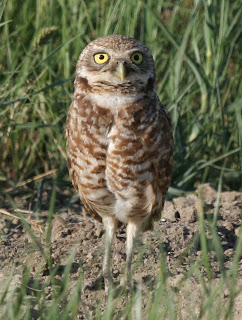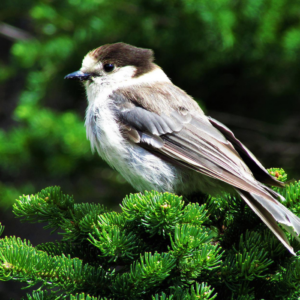Recovery Strategy for Endangered Burrowing Owl Incomplete: Critical Habitat Not Identified in Suffield National Wildlife Area
 |
| Burrowing Owl Photo by C. Wallis |
Four years after a recovery strategy for the Endangered Burrowing Owl was due, the federal government has released a plan that overlooks critical habitat within CFB Suffield National Wildlife Area (NWA).
Burrowing owls are iconic small, long-legged grassland owls that were common summer residents in the southern regions of the prairie provinces and British Columbia until the mid-1900s when modern agriculture practices began. This species was first assessed as ‘Threatened’ in 1979 and designated as ‘Endangered’ in 1995. In the prairie provinces they continue to decline, with fewer than 800 pairs remaining in Alberta and Saskatchewan.
Suffield NWA, located near Medicine Hat, Alberta, is one of the last large areas of unploughed mixed grass prairie in Canada. This unique habitat is home to nearly 100 plant and animal species at risk of extinction, including the Burrowing Owl.
Recovery Strategy Long Overdue
Under the Species at Risk Act (SARA), the federal government was required to produce a recovery strategy for the Burrowing Owl by June 2006. This strategy should have identified the species’ entire critical habitat based on the best available information.
In the summer of 2007, a year past the legal deadline, Environment Canada published a proposed recovery strategy which failed to identify any critical habitat for the Burrowing Owl. Nature Canada called for a new strategy to be written to include critical habitat, since enough information existed to identify it. In our formal response given to the department, we also stressed the urgency of identifying critical habitat within Suffield NWA, given the threat to such habitat from a gas development project proposed by EnCana (now Cenovus).
Now, more than four years after it was due, a revised proposed recovery strategy has again failed to identify the entire critical habitat for Burrowing Owl as the law requires.
Suffield Habitat Overlooked
 |
| Suffield NWA Photo by A. Teucher |
The current proposed recovery strategy appears to indicate that Burrowing Owls are not found in Suffield NWA. However, in Environment Canada’s own testimony before a joint environmental assessment review panel in February 2008, the department told the panel (established to consider EnCana’s – now Cenovus – proposal to drill 1,275 gas wells in the National Wildlife Area) that the endangered owls are known to nest in the area’s rare natural prairie environment. The department even stated it was possible that critical habitat could be identified in Suffield.
It would seem this vital habitat was overlooked in the identification of critical habitat for Burrowing Owl without considering the scientific data. Information is clearly available to identify critical habitat within CFB Suffield National Wildlife Area and such habitat should be identified in the recovery strategy.
Suffield Critical for Burrowing Owl Recovery
Nature Canada and our partners in the Suffield Coalition are urging the federal government to revise the proposed recovery strategy to identify all critical habitat for the Burrowing Owl, including at Suffield. We also continue to call on the government to accept the recommendations of its environmental assessment panel and reject Cenovus’ proposed project to drill 1,275 gas wells in Suffield National Wildlife Area.
The Suffield Coalition comprises seven groups: Alberta Wilderness Association, Federation of Alberta Naturalists, World Wildlife Fund Canada, Nature Saskatchewan, Southern Alberta Group for the Environment, Grasslands Naturalists, and Nature Canada.
Suffield NWA should be a haven for grassland species such as the Burrowing Owl. The Burrowing Owl deserves to have its entire critical habitat identified according to the best available information. With a complete recovery strategy, land use decisions can be made that create a recipe for recovery rather than for extirpation.



